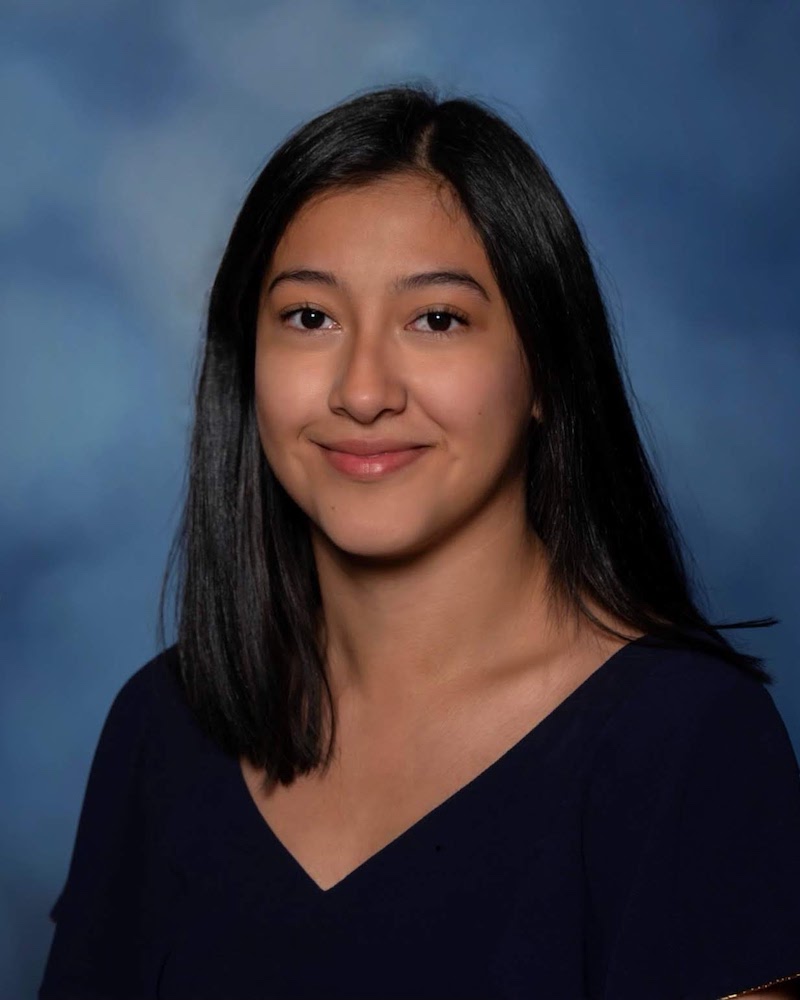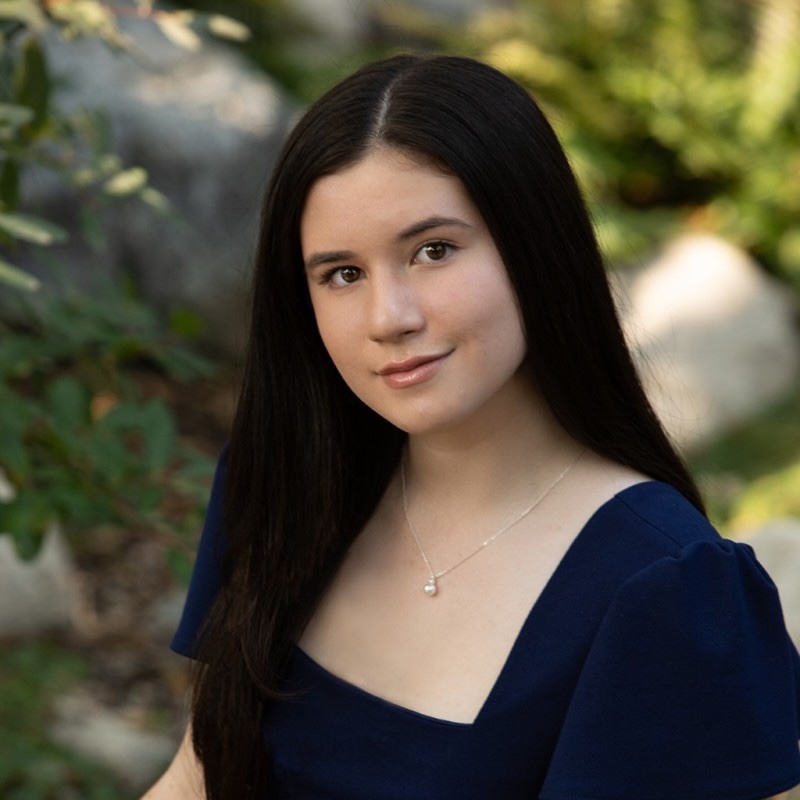With Virtual Reality, Thais Carrillo ’23 Opens Famous Maine Geology Site to All
By Rebecca GoldfineWith a summertime grant from Bowdoin, Thais Carrillo is creating a virtual version of the Giant's Stairs in Harpswell, a site of geological importance.
In her first semester at Bowdoin, Carrillo's earth and oceanographic science class made a field trip to the craggy seaside spot known as the Giant's Stairs. But she had difficulty getting close to the interesting parts of the site because she uses a wheelchair, and the jagged, rocky terrain was too unsafe for her.
Instead, she relied on videos and photographs to study up close the unique basalt interruption in the schist bedrock. The basalt looks a bit like a folded black accordion, or, as its name suggests, a few gigantic steps.
The experience made her wish this outdoor site and others around Maine were more accessible. In consultation with her advisors—Visiting Assistant Professor of Earth and Oceanographic Science Jacky Baughman and Visiting Assistant Professor of Computer Science Stacy Doore (who has now moved to Colby College)—Carrillo launched a project this summer to recreate the Giant's Stairs virtually. She is being funded with a grant from the Gibbons Summer Research Program.

While Carrillo's virtual environment is detailed—with pink flowers waving in the breeze and clouds floating above—her focus is on the north-south alignment of the schist rock and the wide band of basalt running through it.
"We’re trying to help students understand the relationships between those two types of rocks," Carrillo said. "Since the basalt is cross-cutting the schist, that means that the schist was there first, a clue to students that the schist must be older than the basalt that cut through it. That can be a difficult concept to understand without seeing it."
When she has completed the virtual program, students should be able to log in to it from any computer and begin exploring.
A virtual reality environment that mimics a geological site can benefit not only disabled students, Carrillo pointed out, but also students studying remotely. "Now that the COVID pandemic is very prevalent in our lives, the importance of this type of program has increased exponentially," she said.
Using photographs of the Giant's Stairs, Carrillo is modeling the rocks in a program called Blender. It takes her several hours to craft one rock or section of rock that she'll import into the environment building tool, Unity. She is also adding other realistic elements, like the actual plaque at the site and a house that sits to the north of the stairs, to help orient visitors.
Though she had no previous experience creating virtual realities, Carrillo has picked up the software quickly. Part of her adeptness stems from her art background, she thinks. "At Bowdoin I was sculpting on my own time at the pottery studio, and I've always painted and drawn, and I think that is an advantage for me in terms of being a 3D modeler. And it's been fun to apply the same artistic concepts to something that is virtual."
The interdisciplinary nature of virtual reality—in Carrillo's case, it is mixing science, art, accessibility, and education—has her hooked on the technology. As a rising sophomore, she's planning to major in education and psychology, with a possible minor in computer science.
The possibilities of the technology for teachers is almost endless, she said. History students can check out the Mayan ruins in Guatemala or the pyramids in Egypt, and even interact with figures from that time. Geology students can investigate the origins of the earth at sites around the world without getting into an airplane.
"I mean, all the [earth and oceanographic science] labs could be turned into VR," Carrillo said. "Both the ones we go to and the ones we don't go to because they're too far." Adding clickable pop-up information, she said, or new visual angles—such as from above—would only enhance the experience.
"VR is the future," she said. "I'm not just thinking of movies, but classes, too. So many can be put into VR and change their experiences. And we can add to them beyond what exists in the real world."



